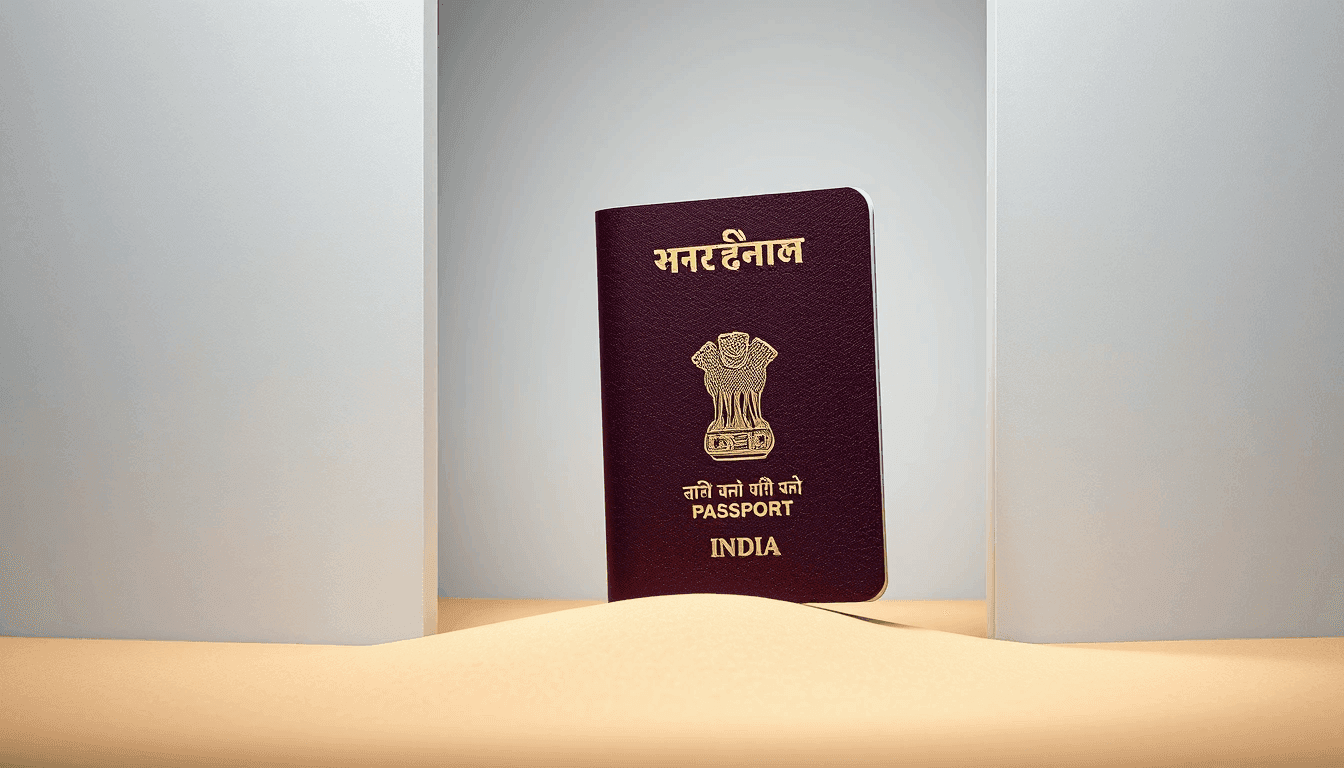

Sending money from India to the UAE – whether it's for family maintenance, investment, or services – involves more than just instructing your bank. For most significant international remittances, the Indian Income Tax Department requires specific declarations to ensure tax compliance. This is where Form 15CA and Form 15CB come into play.
Think of it this way: the Indian government wants to know why money is leaving the country and if any tax (specifically, Tax Deducted at Source, or TDS) should have been paid on that amount before it goes. These forms are your way of declaring that.
Let's break down these forms, why they're needed, and how to navigate the filing process for your India-to-UAE funds transfer.
What Are Form 15CA and Form 15CB?
At their core, these are declarations related to remittances made to non-residents.
Form 15CA- The Remitter's Declaration: This is a declaration submitted by you (the remitter) to the Income Tax Department. It provides details of the payment being made, the recipient, and confirms whether TDS has been deducted or is not applicable. It's essentially your formal statement to the tax authorities.Form 15CB- The Chartered Accountant's Certificate: This is a certificate issued by a practicingChartered Accountant (CA). The CA reviews the nature of your payment, assesses its taxability under Indian Income Tax law, considers the provisions of any applicableDouble Taxation Avoidance Agreement (DTAA)(like the one between India and the UAE), and certifies the amount of income chargeable to tax and the TDS rate applicable (or confirms no TDS is required).
Why Both?
The bank processing your remittance is legally obligated to ensure that any applicable TDS has been accounted for before funds leave India. They rely on Form 15CA (and often Form 15CB) as proof of compliance. For larger or more complex transfers, the bank won't process the remittance without these forms.
Who Needs to File and When is Form 15CB Mandatory?
Not every single rupee leaving India requires a Form 15CB. Here’s a general guide:
Form 15CAis broadly required for most remittances to non-residents. There are specific exemptions for certain types of payments (e.g., import payments for goods, certain inter-bank transfers, payments to international organizations, etc., as per Rule 37BB of the Income Tax Rules). However, for common individual or business remittances, it's usually needed.Form 15CBis typically mandatory when:- The amount of remittance exceeds INR 5 lakh (₹500,000) in a single financial year to a non-resident.
- The payment is taxable in India. Even if the actual TDS is zero due to DTAA benefits, if the income could be taxable, a CA certificate is generally required to confirm the nil/lower rate.
Practical Insight: For most individuals sending substantial amounts from India to the UAE, especially for purposes like family maintenance, gifts, or property investments, if the cumulative amount in a financial year crosses the INR 5 lakh threshold, you will almost certainly need both Form 15CA and Form 15CB.
Prerequisites Before You Start
Before you even think about logging into the e-filing portal, gather these essentials:
- Your PAN (Permanent Account Number): As the remitter.
- Beneficiary's Details: Full name, address, country of residence (UAE),
Tax Identification Number (TIN)/equivalent in UAE (if applicable, though often not for individuals), and theirPANif they have one in India. - Nature of Remittance: Be very clear about the purpose of the transfer (e.g., "Gift to a relative," "Maintenance of close relative," "Purchase of immovable property abroad," "Payment for professional services"). This will correspond to specific
RBI Purpose Codes. - Remittance Amount: The exact amount in Indian Rupees you wish to transfer.
- Beneficiary Bank Details: SWIFT code, account number, bank name, address.
- Supporting Documents: Invoices, agreements, gift deeds, declarations, proof of relationship, previous tax returns, bank statements, etc., depending on the transaction type.
- Access to the Income Tax e-filing portal: You'll need an active account on the Income Tax e-filing portal.
- A Practicing Chartered Accountant (CA): Essential if
Form 15CBis required.
The Step-by-Step Process for Filing Form 15CA & 15CB
Here’s how the process typically unfolds:
Step 1: Engage a Chartered Accountant (for Form 15CB)
If your remittance requires Form 15CB (i.e., over ₹5 lakh or taxable income), this is your first and most crucial step.
- Select a CA: Choose a CA with experience in international taxation and remittances.
- Provide Documents: Furnish all relevant supporting documents to your CA. This will include:
- Your PAN and Aadhaar.
- Beneficiary's details and relationship.
- Proof of the transaction (e.g., gift deed, service agreement, invoice).
- Bank statements showing source of funds.
- Your latest income tax return.
- Any other document the CA deems necessary to understand the nature of the transaction and assess taxability.
- CA's Assessment: The CA will review your documents, determine the nature of the income, assess its taxability in India, and consider the
India-UAE DTAAto see if a lower or nil TDS rate applies. - CA Issues Form 15CB: Based on their assessment, the CA will issue
Form 15CB, certifying the details. They will also need to upload this form to the Income Tax e-filing portal using their own login. Crucially, the CA must uploadForm 15CBbefore you can completeForm 15CAPart C.
Step 2: Filing Form 15CA (Online)
Once your CA has issued and uploaded Form 15CB (if required), you can proceed with Form 15CA.
- Login to e-filing portal: Go to the Income Tax e-filing portal and log in with your PAN and password.
- Navigate to the Form:
- Click on "e-File" > "Income Tax Forms" > "File Income Tax Forms".
- Under the section "Persons Not Dependent on Any Source of Income" (or similar category), find and select "
Form 15CA".
- Choose the Correct Part: This is critical.
Form 15CAhas four parts:- Part A: For remittances where the amount is less than ₹5 lakh in the financial year, and
Form 15CBis not required. - Part B: For remittances where the amount exceeds ₹5 lakh, but an order/certificate under section 197 or a no-deduction certificate from an Assessing Officer has been obtained (less common for individual remittances).
- Part C: For remittances where the amount exceeds ₹5 lakh and a
Form 15CBhas been obtained from a CA. This is the most common part for significant remittances to the UAE. - Part D: For remittances that are not chargeable to tax and are exempt under Rule 37BB of the Income Tax Rules (e.g., import payments for goods).
- For most India-UAE transfers exceeding ₹5 lakh, you will select Part C.
- Part A: For remittances where the amount is less than ₹5 lakh in the financial year, and
- Fill in Details:
- Remitter Details: Your PAN, name, address, contact.
- Remittee Details: Beneficiary's name, address, country (UAE), bank details.
- Remittance Details: Nature of remittance (choose the correct
RBI Purpose Code), amount in INR, currency of remittance (AED), date of remittance. - CA Details (for Part C): You will need to enter the CA's membership number and the acknowledgement number of the
Form 15CBthey uploaded. The system will then fetch theForm 15CBdetails.
- Attach Documents: If selecting Part C, the system will link to the
Form 15CBuploaded by your CA. You don't usually need to upload other documents here, but keep them handy. - Verify and Submit: Review all details carefully. You will typically verify the form using
Aadhaar OTPorNet Banking. Once verified, submit the form. - Generate Acknowledgement: After successful submission, the system will generate an acknowledgement number for
Form 15CAand a PDF copy of the submitted form. Download and save this PDF.
Step 3: Submitting to the Bank
With both forms in hand (or rather, the Form 15CA PDF and the Form 15CB PDF from your CA), you're ready to approach your bank.
- Provide Documents: Submit the generated
Form 15CA(Part C) and theForm 15CBissued by your CA to your bank's international remittance desk. - Bank Verification: The bank will verify the details on the forms, cross-reference them with the transaction details, and ensure all regulatory requirements are met.
- Process Remittance: Once satisfied, the bank will process your funds transfer to the UAE.
Key Considerations & Practical Tips
- India-UAE DTAA: The
Double Taxation Avoidance Agreement (DTAA)between India and the UAE is crucial. While the UAE generally does not impose income tax on individuals, the DTAA helps determine if certain types of income sourced in India (e.g., interest, royalties, professional fees) are taxable in India or the UAE, and at what rate. Your CA will use this to determine the correct TDS. - RBI Purpose Codes: Selecting the correct
RBI Purpose Codeis vital. It categorizes your remittance and helps the authorities monitor capital flows. Your bank and CA can guide you on the appropriate code. Misclassification can lead to issues. - Start Early: Don't wait until the last minute. Engaging a CA, their assessment, filing both forms, and bank processing can take time. Allow at least 3-7 business days (or more, depending on complexity and CA/bank turnaround) before your desired transfer date.
- Documentation is King: Keep meticulous records of all supporting documents, CA communications, and the submitted forms. This is your defense in case of any future queries from tax authorities.
- Penalties for Non-Compliance: Failing to file
Form 15CA(or filing incorrect details) can attract penalties under the Income Tax Act, 1961.Section 271FAcan impose a penalty of ₹1 lakh for non-furnishing. - Choosing Your CA Wisely: Opt for a CA who specializes in international taxation and has experience with remittances. Their expertise can save you significant headaches and ensure correct compliance.
- UAE Specifics: While the UAE typically has no individual income tax, the Indian tax implications depend on the nature of the income being remitted and the tax residency of the recipient from an Indian perspective. A gift to a non-resident relative, for instance, is generally not taxable in India for the recipient, but the remitter still needs to declare it.
Common Scenarios for India-UAE Transfers
- Gift to a Relative in UAE: Generally, gifts to specified relatives are not taxable for the recipient. However, if the amount exceeds ₹5 lakh in a financial year,
Form 15CB(and thus Part C ofForm 15CA) will be required to certify this non-taxability. - Maintenance of Family Members: Similar to gifts, this is often not taxable, but the ₹5 lakh threshold for
Form 15CBstill applies. - Investment Abroad (e.g., Property, Shares): These are capital account transactions. While the remittance itself might not be "income" for the recipient, the Indian tax authorities still require
Form 15CA/CBto monitor capital outflow and ensure no hidden taxable income is being transferred. - Payment for Services (e.g., Professional Fees): This is a classic case where TDS is highly probable. The CA will assess if the services are taxable in India per the Income Tax Act and the DTAA, and certify the applicable TDS rate.
Frequently Asked Questions (FAQs)
Q: What if I don't file Form 15CA/CB? A: Your bank will likely refuse to process the remittance. If it somehow slips through (highly unlikely for significant amounts), you could face substantial penalties from the Income Tax Department.
Q: Can I file Form 15CA myself without a CA?
A: Yes, if your remittance falls under Part A (less than ₹5 lakh and no Form 15CB required) or Part D (exempt payments), you can file Form 15CA yourself. However, for remittances exceeding ₹5 lakh requiring Form 15CB (Part C), you must engage a CA first.
Q: What is the threshold for Form 15CB?
A: Form 15CB is generally required if the remittance amount to a non-resident in a financial year exceeds ₹5 lakh and the payment is chargeable to tax in India (even if the DTAA reduces tax to zero).
Q: How long is Form 15CB valid?
A: Form 15CB is typically valid for the specific transaction and amount it was issued for. It's not a generic, long-term certificate. If you're making multiple remittances, you might need multiple Form 15CBs depending on the cumulative amount and frequency.
Q: What if the remittee is an Indian citizen residing in UAE?
A: Their citizenship doesn't change the requirement. What matters is their tax residency status (non-resident of India) and the nature of the remittance. The same rules for Form 15CA/CB apply.
Next Steps
Once your funds are transferred, ensure you retain all copies of Form 15CA, Form 15CB, bank remittance advice, and all supporting documents. These are crucial for your own records and in case of any future tax scrutiny.
Conclusion
Navigating Form 15CA and Form 15CB for funds transfer from India to the UAE might seem daunting initially, but it's a standard, compliance-driven process. By understanding the requirements, engaging a competent Chartered Accountant when needed, and meticulously following the steps, you can ensure a smooth and compliant remittance. Don't view these as hurdles, but as necessary safeguards in the world of international finance.

About Harleen Kaur Bawa
Harleen Kaur Bawa is a licensed immigration attorney specializing in Canadian immigration and Indian services. With extensive experience in family sponsorship, Express Entry, refugee claims, and OCI services, she has successfully helped hundreds of clients navigate complex immigration processes.
Harleen holds degrees from York University - Osgoode Hall Law School and the University of Toronto, and is certified by the Law Society of Ontario and the Immigration Consultants of Canada Regulatory Council. She is committed to providing personalized, professional legal services to help clients achieve their immigration goals.
Related Articles

Renewing Your Indian Passport in UAE Without the Old Passport: A Practical Guide
Lost, stolen, or damaged Indian passport in UAE? Get the essential guide to re-issue. Understand police reports, documents, fees, and timelines for a smooth process.

Your Guide to Child Birth Registration at the Indian Embassy Dubai: A Step-by-Step Process
Simplify newborn Indian passport & birth registration in Dubai for expats. Our guide helps Indian parents navigate documents & avoid pitfalls efficiently.

Fixing OCI Application Photo and Signature Upload Errors in the UAE: Your Practical Guide
Applying for OCI from UAE? Fix common photo & signature upload errors like dimensions, file size & background. Get precise steps to ensure your application isn't rejected.